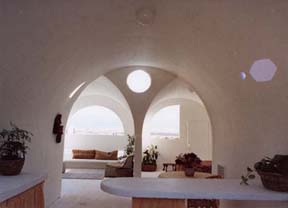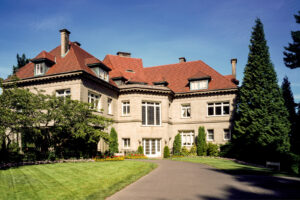Posted by Kevin Doell
Catching up on my podcasts this morning, I pulled down the PRI Studio 360 show “Creative Minds Go Green.” It was a great program full of crazy stuff to make one think about the many shades of green.
This show had it all: solar powered street vendor carts, “Eco Art” featuring deformed frogs and songs generated from hurricane data, the solar powered subway terminal at Coney Island that generates 250,000 kilowatt hours per year (40 houses worth) and of note, “Superadobe” homes originally prototyped for a NASA lunar colony that maximize space, light and interior ventilation.
In the adobe segment, they mentioned that the houses were so strong that when one of them was being tested in an earthquake simulator, the house didn’t budge, but the simulator started to bend. It’s all connected to the “power of arches” bit. (Remember the trick where you can’t crush an egg by squeezing it from top to bottom, but it can collapse quite messily when squeezed on its sides? That’s the one.)
The program reminded me of a lesson a teacher put into my head years ago when he said, “The extremes define the center.” I believe this is what is happening more than usual with this latest incarnation of the green movement. The adobe house is a good example. When they first tried to have them built for residential use in California, the local building department couldn’t even approve it because it had no idea how to rate its performance. They did their homework, got up to speed, and now approve that construction methodology in that county.
Of course, you won’t see these Skywalker homes on display at Lowe’s this summer, but it’s this kind of fringe stuff that pulls the center over a notch or two. My friend, Tom Hocker, a facilities expert, reminds me that this at least the fourth time he’s been through a greening campaign in his many years in corporate life. While each iteration of the movement has had its positive effects, I’m just hoping that this green pull moves us all a little farther than those that came before.








